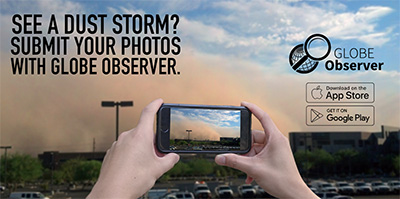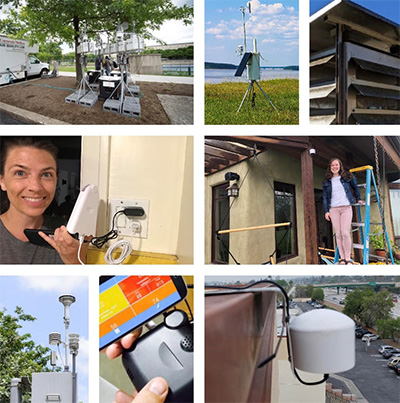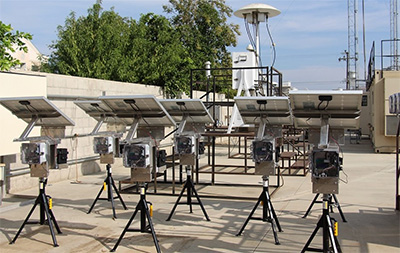May 4: Participatory Science & Sensors
Participatory science, also known as “citizen science” or “community science,” is an expansive field where the public contributes to scientific knowledge and understanding. Ordinary people participate in projects, collect data, and share information to help better understand environmental concerns happening in their communities, such as soil contamination, microplastic pollution, and environmental justice issues. Sensors are one tool that community members can use to monitor the air quality in their area and help them Be Air Aware & Prepared!
Tracking Dust Storms with an App

NASA is partnering with citizen scientists to track dust storms through The GLOBE Observer app. People living in areas with dust storms can submit their photos through the app where NASA scientists can check if their models have done a good job at predicting dust storms. In addition, the data will be used to verify satellite observations.
This helps communities prepare and avoid the harmful impacts of dust storms. Observations can help alert people with asthma or other respiratory conditions when to stay indoors or even let farmers and ranchers know which days would be better to till their land. The data can also help warn construction workers when to wear protective equipment to reduce risks of Valley fever infection and help truck drivers plan their trips to avoid dangerous road conditions and costly detours. Even music concerts, sports teams, and weddings can best plan their outdoor events by utilizing this type of data. If you live in an area with dust storms, you can download the app to begin helping your community Be Air Aware & Prepared.
Air Sensor Loan Program

EPA has established air sensor loan programs independently and through collaborations with libraries, tribes, museums and others to enable the people to learn about air quality in their communities. These loan programs bring air sensor technology advances to the public for educational purposes. Some of these loan programs include complementary educational resources (e.g., lesson plans, resource guides, frequently asked questions), which can be found on the Air Sensor Toolbox Educational Resources page.
Measuring the TEMPO of Air Quality
This year NASA is launching a satellite that includes an air sensor that will improve air pollution measurements. The project, Tropospheric Emissions: Monitoring of Pollution (TEMPO), will zero in on North America, from Puerto Rico to northern Canada, from the Atlantic to the Pacific, encompassing the entire continental United States.
TEMPO will help address issues like rush-hour pollution in urban and suburban areas; transport of pollution from biomass burning and ozone production; air pollution from oil and gas fields; and ship pollution tracks and drilling platform plumes. These measurements will have implications for air quality forecasting and public health and will improve national pollution inventories.
Using Sensors to Monitor Volcanic Smog & More
 EPA continues to support several air quality participatory science projects through grant programs. These projects use low-cost air quality sensors to improve our understanding of air pollution and related health effects, address unique air quality challenges and potentially reduce harmful air pollution exposures. The goals of these projects range from tracking volcanic smog to monitoring pollution from transportation to neighborhood air quality monitoring. EPA has created a storymap
EPA continues to support several air quality participatory science projects through grant programs. These projects use low-cost air quality sensors to improve our understanding of air pollution and related health effects, address unique air quality challenges and potentially reduce harmful air pollution exposures. The goals of these projects range from tracking volcanic smog to monitoring pollution from transportation to neighborhood air quality monitoring. EPA has created a storymap  to help illustrate and highlight this work and more.
to help illustrate and highlight this work and more.
Projects like these help us all Be Air Aware & Prepared. You can learn more about this project and other federally-supported participatory science projects, as well as tools and resources at citizenscience.gov.






